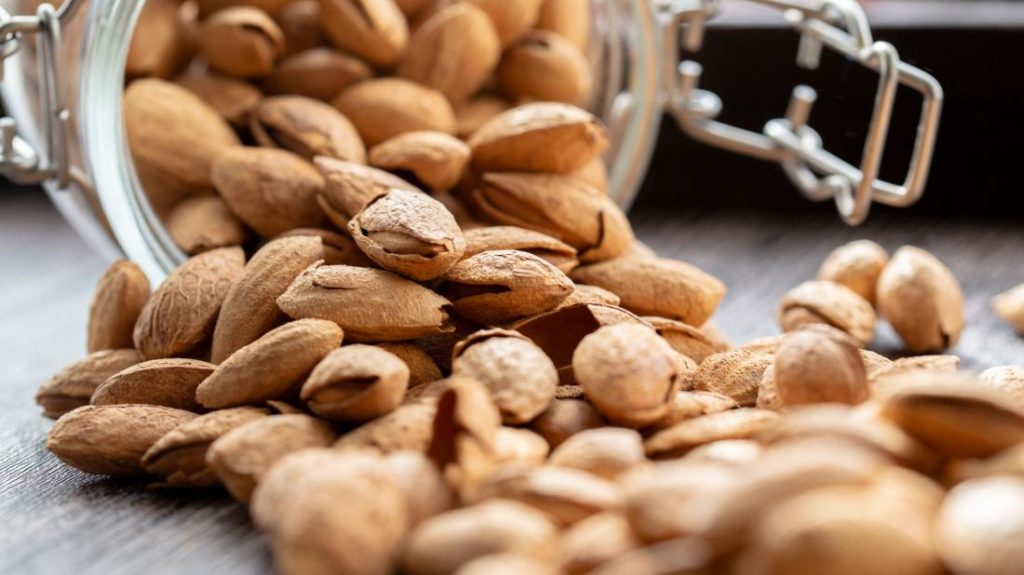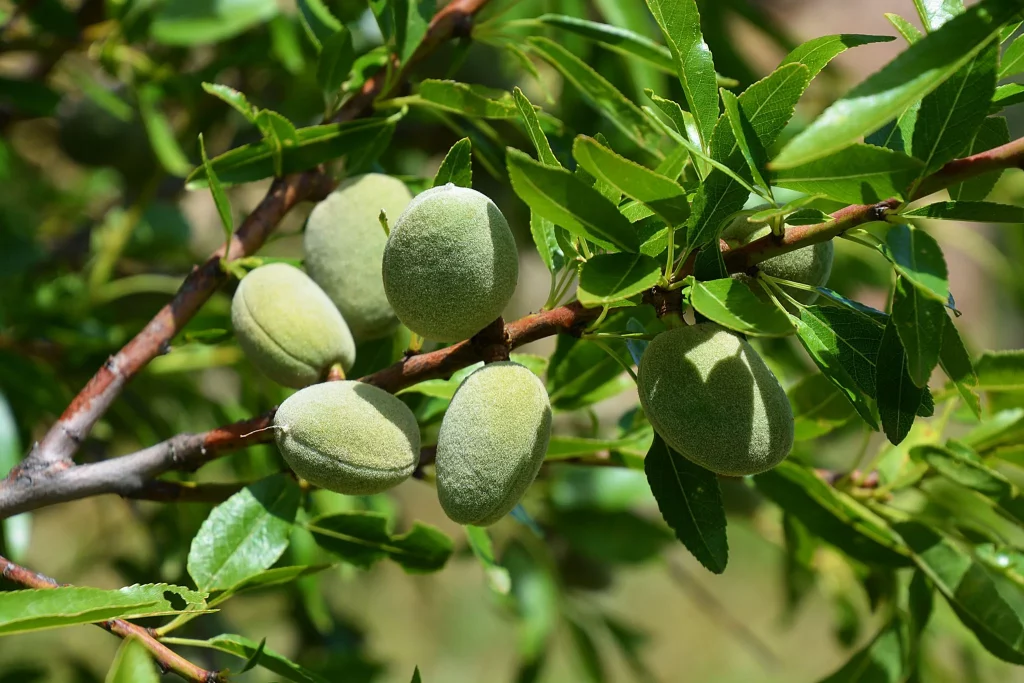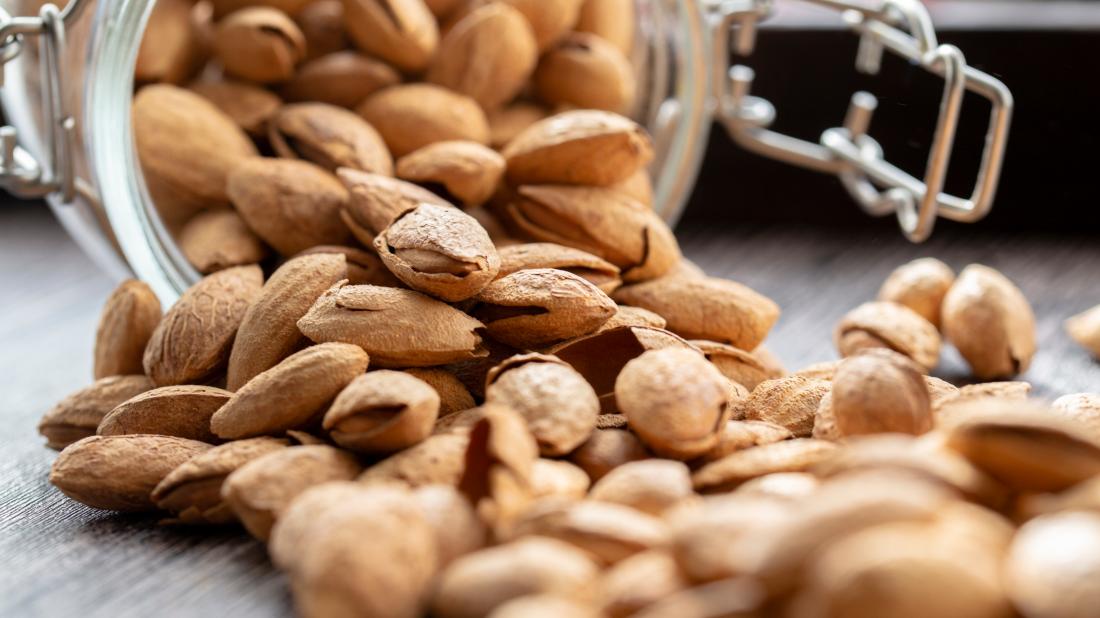Almonds are more than a popular snack – they’re a nutritional powerhouse, versatile culinary ingredient, and thriving agricultural commodity. In this comprehensive 7-minute read, discover why almonds deserve a prime spot in your pantry, how to use them creatively in recipes, and what’s driving global almond trends in 2025.

1. What Makes Almonds So Special?
Belonging to the Prunus genus (alongside peaches and cherries), almonds are botanically seeds rather than true nuts. Yet their nutrient profile rivals any heart-healthy snack:
- High in Monounsaturated Fats: Similar to those in olive oil, supporting healthy cholesterol levels.
- Rich in Plant Protein: About 6 g per ounce (28 g), ideal for vegetarians and omnivores alike.
- Packed with Vitamin E and Antioxidants: Neutralizing free radicals to protect cells from oxidative stress.
- Loaded with Fiber and Magnesium: Promoting digestive health, blood sugar balance, and muscle function.
These attributes make almonds a top choice for health enthusiasts, dietitians, and chefs worldwide. https://www.medicalnewstoday.com/articles/269468

2. Top 7 Health Benefits of Almonds
- Heart Health: Almonds lower LDL (“bad”) cholesterol and reduce inflammation markers, decreasing cardiovascular risk.
- Weight Management: Satiety-boosting protein and fiber help curb cravings and control calorie intake.
- Blood Sugar Control: Low glycemic index plus magnesium content enhance insulin sensitivity and regulate glucose.
- Skin Protection: Vitamin E and polyphenols protect skin from UV damage, promoting a glowing complexion.
- Bone Strength: Calcium, phosphorus, and magnesium support healthy bones and teeth.
- Brain Function: Almonds supply riboflavin and L-carnitine, nutrients linked to improved cognitive performance.
- Gut Health: Prebiotic fiber feeds beneficial gut bacteria, aiding digestion and immune function.
Regular consumption—about a handful (1 oz) daily—delivers these benefits without excess calories.
3. Culinary Uses: From Breakfast to Dessert
Almonds’ mild, sweet flavor and satisfying crunch make them kitchen favorites:
- Oatmeal & Yogurt Toppings: Add sliced or slivered almonds for texture and nutrition.
- Salad Garnishes: Toasted almonds elevate both flavor and visual appeal.
- Almond Flour Baking: Grain-free cakes, cookies, and pancakes turn moist and flavorful with flour.
- Stir-Fries & Grain Bowls: Toasted almonds add crunch to savory dishes.
- Nut Butters & Spreads: Homemade almond butter pairs perfectly with fruit, toast, and smoothies.
- Almond Oils & Extracts: High-quality almond oil for salad dressings; almond extract for baking.
Their versatility spans sweet, savory, raw, and cooked applications—making almonds a pantry essential.

4. Easy Almond Recipes to Try Today
- Honey-Roasted Almonds: Toss in honey, a pinch of salt, and cinnamon. Bake at 325°F (165°C) for 15 minutes for a sweet snack.
- Almond Crusted Chicken: Coat chicken cutlets in almond flour and bake until golden—an easy gluten-free alternative to breadcrumbs.
- No-Bake Almond Energy Bites: Blend dates, oats, almond butter and chia seeds. Roll into balls and chill for a quick energy boost.
- Almond Pesto: Swap pine nuts for almonds in your favorite pesto recipe—yields a nutty, budget-friendly twist.
- Almond Milk Smoothie: Blend 1 cup almond milk, ½ banana, 1 tbsp almond butter, and ice for a creamy, protein-rich breakfast.

5. Almond Milk and Other Plant-Based Alternatives
Almond milk remains the top plant-based milk globally, favored for its light taste and low calorie count. Key trends in 2025 include:
- Protein-Enhanced Varieties: Fortified with pea or soy protein to match dairy’s protein content.
- Barista-Blends: Formulated for frothing and latte art, catering to coffee shop and home barista markets.
- Flavored Options: Vanilla, chocolate, and seasonal flavors (pumpkin spice!) for consumer variety.
Beyond almond milk, almond yogurt, cheese, and ice cream products expand plant-based options in refrigerated and frozen aisles.
6. Global Almond Production: Key Regions & Trends
The global almond market, valued at $13.6 billion in 2024, relies primarily on three regions:
- California, USA: Produces 80% of the world’s almonds, leveraging Mediterranean-style climates and advanced irrigation systems.
- Spain & Italy: Europe’s leading producers, focusing on organic and specialty varieties.
- Australia: Rapidly expanding almond orchards with investments in water-efficient technologies.
Sustainability trends include water-saving drip irrigation, cover cropping to improve soil health, and pest management via beneficial insects. California growers target 50% water use reduction by 2030, balancing production with environmental stewardship.
7. Tips for Buying, Storing, and Roasting Almonds
- Buying: Choose raw, unsalted almonds for maximum versatility. Look for certified organic and non-GMO labels if those standards matter to you.
- Storing: Keep almonds in airtight containers, refrigerated or frozen to preserve freshness and prevent rancidity.
- Roasting: For easy oven roasting, spread almonds on a baking sheet, drizzle with olive oil or honey, season as desired, and roast at 325°F (165°C) for 12–15 minutes, stirring halfway through.
Proper storage and preparation ensure almonds remain fresh, flavorful, and nutritious.
8. Sustainability and Almond Farming
Almond production faces environmental scrutiny due to high water use. However, modern almond orchards implement innovative sustainability measures:
- Drip Irrigation & Soil Moisture Sensors: Deliver water precisely where and when trees need it.
- Cover Crops & Mulching: Reduce evaporation, improve soil structure, and support pollinator habitat.
- Integrated Pest Management (IPM): Minimizes chemical use by leveraging natural predators and biopesticides.
- Pollinator Protection: Beekeepers and almond growers collaborate on hive placement and flowering calendar management.
Certifications such as the California Almond Sustainability Program provide transparency and accountability, ensuring almonds remain a responsible choice for eco-conscious consumers.
Conclusion
Almonds’ unique combination of heart-healthy fats, plant protein, vitamins, minerals, and culinary versatility makes them a superstar ingredient for modern kitchens, plant-based diets, and traditional fare alike. From easy at-home recipes to global production innovations, almonds continue evolving to meet consumer demands for flavor, nutrition, and sustainability.
Incorporate a handful of almonds into your daily routine, explore creative almond-based recipes, and support sustainable farming practices to enjoy the countless benefits this remarkable seed has to offer. Whether you’re a health enthusiast, culinary explorer, or environmentally conscious shopper, almonds deliver unmatched value with every crunchy bite.
About us
Try it for yourself. Freshdi.com
Global B2B Marketplace.


